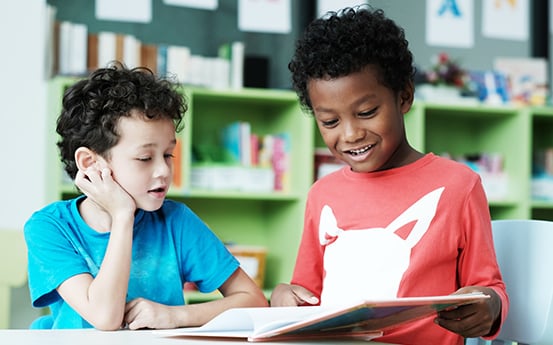The past few weeks in America and abroad have been filled with civil unrest and protests over the death of George Floyd and the unfair treatment of people of color. As I deal with the internal turmoil within myself, I ponder about the littlest learners we encounter daily and what they are thinking. I also wonder how we, as members in early childhood education, can evoke change for a better tomorrow.
I know from my experience as a black woman, talking about race with adults can be challenging; trying to have conversations with young children adds another layer of difficulty. In my reflection, I am reminded of a quote by Fredrick Douglas, "It is easier to build strong children than to repair broken men." This statement is so true. It is more effective and fruitful to give the children and families we serve the tools and resources needed to build the kind of future they deserve. While the death of George Floyd and others have caused unbelievable hurt and anger, they present teachable moments for parents and educators.
Below are 12 suggestions to talk to children about race and anti-racism.
- Start early. Storybooks are a great way to introduce people of all races to your little learner. Research indicates that children as young as six months can distinguish skin color and facial differences of ethnic groups.
- Monitor your own actions. Children learn by example, and they observe more closely what you do than what you say. Be conscious of your interactions with people of different races. Evaluate your friendships and the racial makeup of those friendships.
- Seek out diversity. If your child does not attend a diverse school, ask for resources such as books, puzzles, and other learning materials that show persons of different backgrounds in positive ways.
- Inspire children's natural curiosity. Children are naturally curious about people and our differences. Encourage them to speak openly and respectfully about these differences; then ask them to share our commonalities. Communicate that we may look different outwardly, but inwardly we are all human beings.
- It’s ok to say “I don’t know.” If your child asks a question you can’t answer, allow yourself time to research, or ask a friend to help you with the answer. Just be sure to come back to the question. I have found that people love to share about their culture and experiences, and they usually appreciative an inquiry over an assumption.
- Acknowledge your own bias. We all have preferences that we struggle to overcome daily, derived from our past experiences, upbringing, or what we see in the media. It is our responsibility to recognize those biases, address why we have them, and become even more conscious of how our prejudices can and will affect children. Share your biases — and your remedies to address them — in a child-appropriate way, and allow children to be a part of your solution.
- Share from your own experience. Share examples of times you have witnessed mistreatment of a person and what you have done or wanted to do to help change the situation.
- Increase your cultural literacy. Educate yourself and talk about the history of African Americans and other ethnic groups. Discuss their struggles and experiences. Share stories of resistance and protest, and discuss the outcomes of activities in a way that is appropriate to your child's age.
- Make it relevant. Have open dialogue about the anger and protests going on within the black community during these times. Ask children how they would respond if they see a friend or classmate experiencing ill-treatment.
- Be a change agent. Give children the freedom to be outspoken when they have either seen or experienced unfair treatment. Confirm to them that their voice is essential and a powerful tool to use against injustice. Help them express and promote the change they want to see.
- Love. Especially during these times, it is essential to reiterate to children that they are loved and that our differences reflect strength and beauty.
- Know your child. Understand that children of color may especially have feelings of confusion and hurt. This may require more patience for parents and educators. Recognize that those feelings may show up differently in every child, and provide a safe space to express those feelings as necessary.
Finally, remember that behavior changes take time and continual effort. As a parent or educator, you are the first line of defense in promoting healthy, fair, and meaningful relationships with children. Our world is becoming more diverse, and the first step to change is having open, honest, and at times, tough conversations. But remember that we have one common factor: our humanity.



